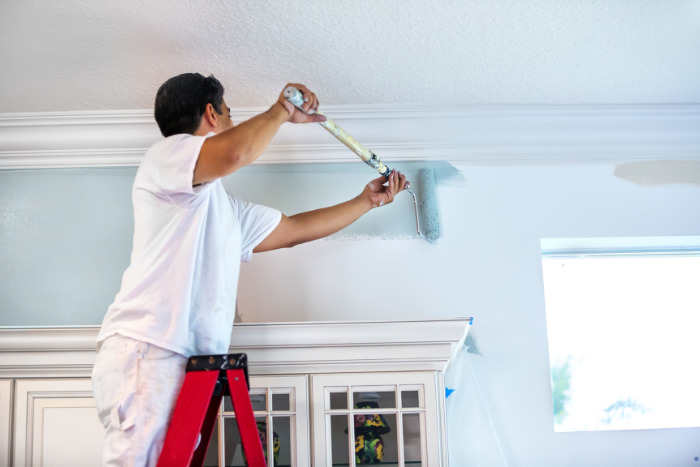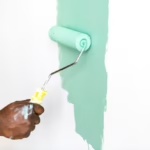Art is not just about pretty pictures. It’s a way for artists to express themselves. Through color, shape, and texture, they share their feelings, thoughts, and ideas. Every piece of art tells a story. And guess what? The story is told through the emotions behind it and how the artist uses texture.
Today, we’re diving into these two important parts of art: expression and texture. You might not realize it, but these elements change how we see and feel about a piece. They turn a simple image into something that resonates with us.
What is Expression in Art?
Let’s talk about expression. It’s the part of art that shows the artist’s feelings. When an artist paints, they don’t just slap colors on a canvas. They choose those colors, shapes, and lines to show their emotions. This is what makes each piece unique.
Take a painting for example. Some are bright and colorful, full of energy and joy. Others might use darker tones, giving off a more serious or sad vibe. That’s all expression at work. Artists use expression to connect with us. We feel what they feel through their work.
When you look at a painting, notice how it makes you feel. Does it excite you? Does it calm you down? That’s the artist’s expression coming through. They don’t always need words to communicate. The artwork itself speaks volumes.
How Texture Influences Art
Texture, now that’s an interesting part of art. It’s all about how the surface of the artwork feels or looks like it would feel. Texture can be rough, smooth, bumpy, or soft. Artists can create texture in different ways, like using thick paint, different tools, or just layering materials.
There are two kinds of texture you’ll come across: actual texture and implied texture.
Actual Texture
This one is easy. Actual texture is the real, physical texture. Imagine touching a painting. If the artist has used thick paint, you can feel the bumps and ridges. That’s actual texture. You can feel it.
Artists sometimes use tools like palette knives to create this thick, raised effect. It gives the artwork a real, three-dimensional feel. When you look at a piece with actual texture, it’s almost like the art is alive. You can’t help but want to reach out and touch it.
Implied Texture
Now, the implied texture is a little trickier. It’s when the artist makes the artwork look like it has texture, even though it’s smooth. Artists use paint, shading, and lines to make something look rough or soft. But in reality, it’s all flat.
Imagine a painting of a stone wall. The artist might use different colors and brushstrokes to make the wall look rough. But if you touched the painting, it would be flat. That’s implied texture. Your eyes trick you into thinking it’s textured when it’s not.
Both actual and implied textures add a lot of depth to art. They make the piece more interesting to look at. Without texture, a painting can feel flat and lifeless.
Why is Expression So Important in Art?
You might be asking, why does expression matter so much in art? Well, expression is what makes art personal. When artists add their feelings to their work, it stops being just a picture. It becomes something deeper.
When you look at a painting, you’re not just seeing colors and shapes. You’re connecting with the artist’s emotions. Expression is the bridge between the artist and the viewer. It’s how they communicate their inner world.
Think of a portrait. A person’s face can tell you everything. A slight smile, a raised eyebrow, a serious stare – these little details tell a story. That’s how expression works. It gives life to the painting.
Some artworks make you feel happy, while others might leave you feeling sad or thoughtful. That’s the magic of expression in art. It taps into your emotions. And the best part? It’s universal. We can all feel something when we see art that’s full of expression.
How Texture Enhances the Overall Experience
The texture doesn’t just sit there. It’s not just a side note. It plays a big role in how we experience art. Without texture, the piece would be flat. Literally and figuratively.
Texture adds dimension to the artwork. It makes a piece feel more alive. A rough, textured surface can make the painting feel intense or dramatic. A smooth surface might make the piece feel calm and gentle. The texture guides how you feel about the artwork.
Take a painting of a forest. If the artist uses rough, thick brushstrokes to create the trees, the forest might feel wild. It might even make you feel the energy of nature. On the other hand, a painting of the ocean with smooth textures might give you a feeling of peace.
But the texture isn’t just about the feel. It’s also about how it catches the light. Some textured surfaces reflect light in different ways, adding even more depth to the artwork.
Texture helps your eyes travel across the piece. It adds interest and keeps you engaged. A smooth background with rough areas in the foreground can create the illusion of space. It’s like the painting is coming to life right before your eyes.
The Relationship Between Expression and Texture
Expression and texture work hand in hand. Think of them as partners in crime. They team up to tell a story. Expression can set the mood, and texture brings that mood to life.
For example, imagine a painting of a storm. The artist uses rough, jagged brushstrokes to create the feeling of chaos. The texture of the waves and clouds makes the storm feel wild. Without that texture, the piece wouldn’t have the same impact.
On the flip side, a calm landscape might have soft, smooth textures. The light brushstrokes and gentle color choices can make the scene feel peaceful. Together, the texture and expression create a complete experience. The viewer feels what the artist intended.
It’s this combination that makes art so powerful. Texture can heighten the emotion behind a piece. Without texture, the expression might feel a little flat. But with texture, it becomes real.
Exploring Expression and Texture in Different Art Forms
You don’t just see expression and texture in paintings. These elements are everywhere in the art world. They’re used in sculpture, photography, architecture, and even in furniture design. You’ll find them in many forms, making each piece unique.
For example, in cabinets painting, texture and expression are key to making the furniture stand out. Imagine a beautifully painted cabinet. The artist may use smooth, glossy finishes to make it look elegant. Or, they might go for a rustic, textured look to give it a more natural, vintage vibe. The way the cabinet is painted can express a certain style or mood.
Artists don’t just paint for the sake of painting. They think about the texture and how it will make the viewer feel. In sculpture, for instance, the texture is often rough and tactile, while a smooth marble statue might give off a sense of calm and grace.
Expression and texture are everywhere, and they help make every art form feel complete.
Conclusion
Expression and texture are more than just fancy words in art. They are essential. Together, they bring a piece of art to life. Expression is about the artist’s feelings, and texture adds depth to those feelings. Without either, art would just be pictures on a wall.
Next time you look at a painting, take a moment to think about the texture. What emotions do you feel? Is the texture rough or smooth? How does it change the mood of the painting? By understanding how expression and texture work together, you can appreciate art in a whole new way. It’s not just about what you see, but what you feel. And that’s the beauty of art.


